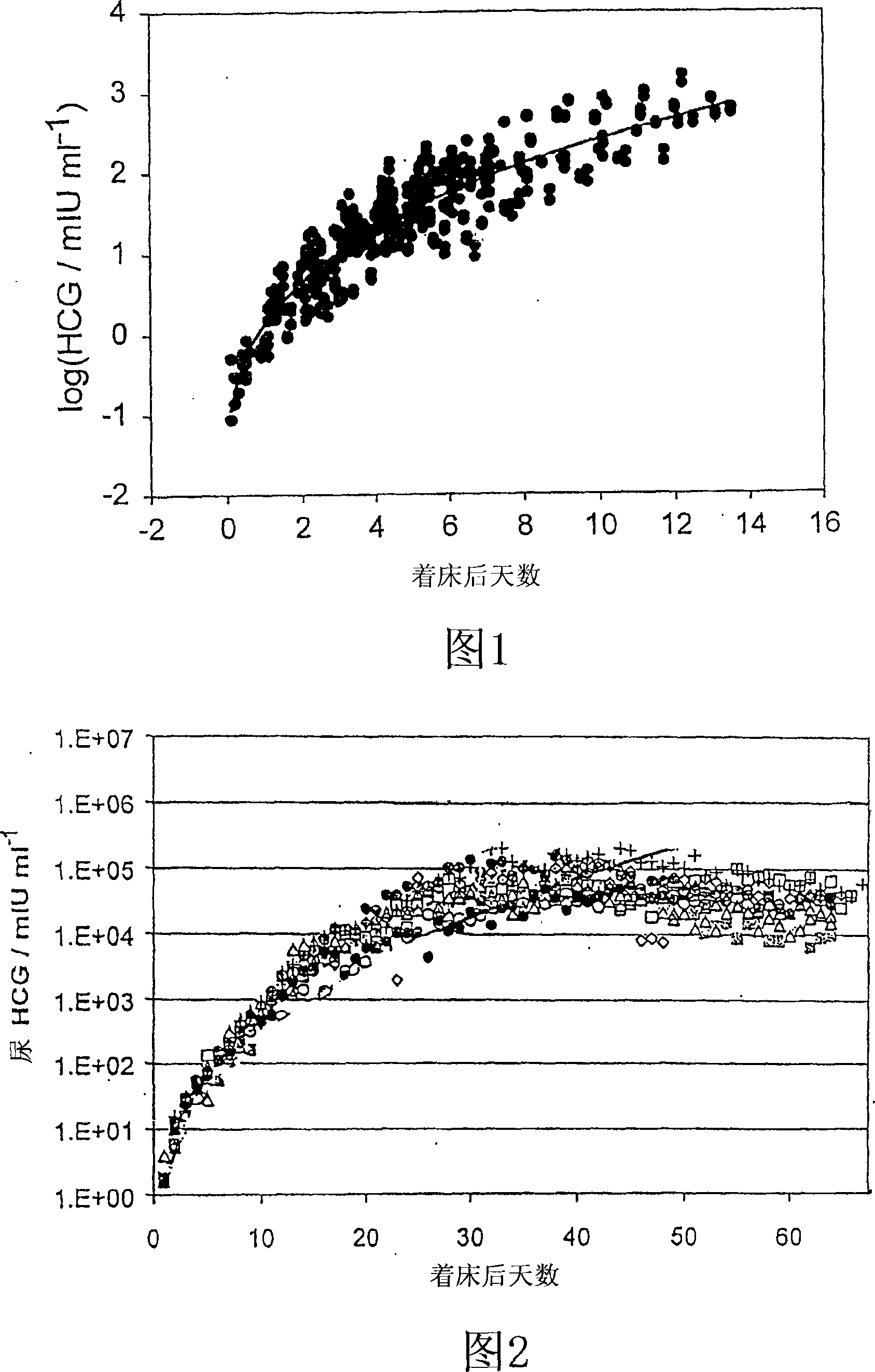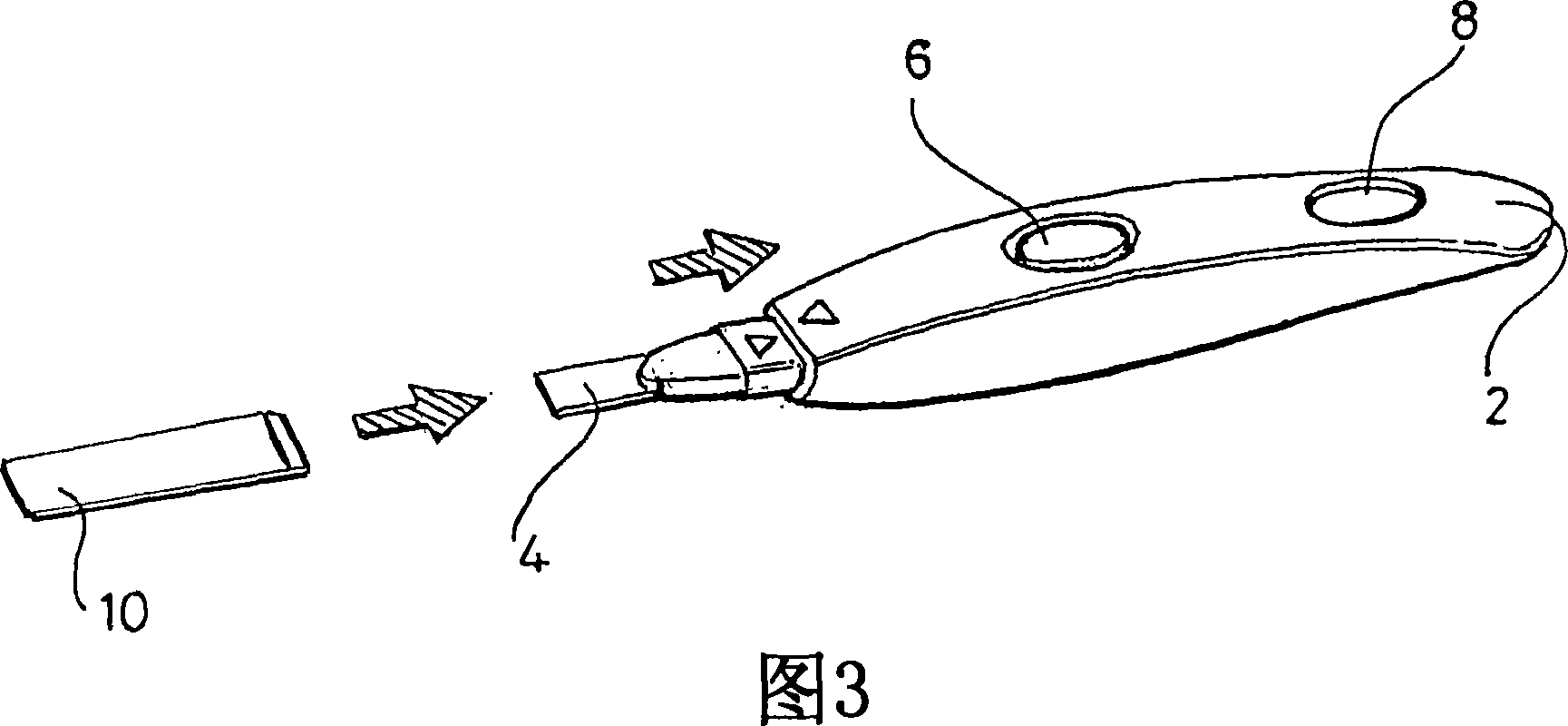Determining the estimated date of embryo implantation and related dates
A technique for implantation and embryos, which is applied in the field of determining the estimated date of embryo implantation and related dates, and can solve the problems of determining the expected date of delivery, not raising it, etc.
- Summary
- Abstract
- Description
- Claims
- Application Information
AI Technical Summary
Problems solved by technology
Method used
Image
Examples
Embodiment 1
[0046] As part of a larger study of changes in different hormone concentrations during the female reproductive cycle, samples were collected from a group of female volunteers. The morning urine samples are collected every day and analyzed using standard immunological analysis techniques to obtain the concentration values of various analytes, including hCG, LH, and follicle-stimulating hormone (FSH) in the urine. Subsequent analysis of the data revealed that in those women who became pregnant during the study, as expected, the urine hCG concentration increased rapidly. However, surprisingly, the inventors found that the graph of hormone concentration versus time can be translated along the time axis and overlapped almost completely. That is to say, the process of increasing hCG between different individuals has not changed much, and the difference between different individuals is largely due to the different time when the concentration of hCG starts to rise. The time at which thi...
Embodiment 2
[0049] Based on the data, the inventor was able to derive many algorithms that can be used to estimate the date of implantation based on the measured hCG concentration value. Using the data shown in Figure 1, the following equation can be derived:
[0050] logh=a(t-t 0 ) 0.33 -1.86 (Equation 1)
[0051] Where h is the concentration of hCG in the sample, expressed in mIU / ml, t-t 0 Is the number of days between the date of measurement and the date of implantation, and a is the coefficient (1.99 in this case).
[0052]According to the data obtained using a slightly different hCG analysis technique shown in Figure 2, the value of a was found to be 2.15. The value of parameter a reflects the characteristics of the analysis system used, and generally depends on the specific detection technology used (for example, a specific antibody) and / or the specific form of hCG to be detected. Therefore, the selected system should be calibrated with known standards (for example, samples obtained fro...
Embodiment 3
[0058] In calculating the date of implantation, one cause of uncertainty is that the value of the parameter "a" varies from person to person (although it may be less than the error predicted before the present invention). Another cause of error is that the concentration of hCG in urine fluctuates randomly around the average value in any given day. The present inventors investigated whether the causes of these errors can be reduced by using multiple hCG concentration determinations (for example, two measurements, 7 days apart).
[0059] Estimate the parameters a and t by directly solving Equation 2 using different log(hCG) values obtained on two different days 0 The attempt of was unsuccessful, because cubed the value (log(hCG)-1.86) to magnify the error. The small error in the estimation of a value caused by the small fluctuation of log(hCG) can cause the t 0 Estimated large error. However, the following method seems to work satisfactorily.
[0060] According to Equation 1, the ...
PUM
 Login to View More
Login to View More Abstract
Description
Claims
Application Information
 Login to View More
Login to View More - R&D
- Intellectual Property
- Life Sciences
- Materials
- Tech Scout
- Unparalleled Data Quality
- Higher Quality Content
- 60% Fewer Hallucinations
Browse by: Latest US Patents, China's latest patents, Technical Efficacy Thesaurus, Application Domain, Technology Topic, Popular Technical Reports.
© 2025 PatSnap. All rights reserved.Legal|Privacy policy|Modern Slavery Act Transparency Statement|Sitemap|About US| Contact US: help@patsnap.com



